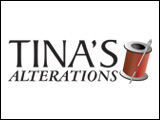The head of Agriculture Canada’s Seed Increase Unit is encouraging swine producers to consider either hulless oats or hulless barley as one way of reducing the potential for mycotoxin contamination of feed from fusarium head blight.
Fusarium head blight, a fungal disease that infects cereal grains, produces deoxynivalenol or DON a mycotoxin that will result in feed refusal among swine reducing performance.
Dave Gehl, the head of the Seed Increase Unit with Agriculture and Agri-Food Canada at Indian Head, says, because winter wheat tends to flower when there isn’t a high spore load, it has been the grain of choice for the past number of years but in 2010 there was a major problem with fusarium in winter wheat and we also had high levels in the spring cereals.
Durum wheat is probably the most susceptible of our small grain cereals.
Then we have various classes of spring wheat, again some of those which are more susceptible and then we get into the barleys and oats.
Oats would be probably our least susceptible just as the standard varieties go and of course within each class and crop kind we have different levels of susceptibility.
I think farmers can look at the relatively profitability or potential use.
If you’re growing a dedicated grain for swine rations you might look at a hulless barley or a hulless oat because you often are removing a lot of the toxins with the hull so those tend to be a little bit on the lower side for the fusarium toxins.
Especially I think hulless oats is, of any of the single grains at least in my experience, probably the safest from that point of view.
Gehl concedes availability of these hulless varieties may be tight.
He notes concerns over limited availability of supply has slowed uptake among swine producers and the limited demand has tempered grower interest in producing these crops.
Source: Farmscape.Ca



